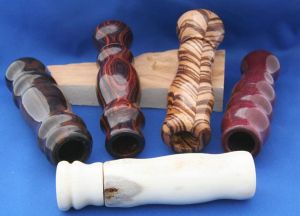Tiger
Member
I have tried a number of different CA finishes usually after the particular author gives a ringing endorsement of their method. I have now settled on 2 methods that have been more consistent for me. One method is 15 to 20 coats of thin CA applied with either paper towel or craft foam. The other method is BLO/CA applied as per William Young's WoodTurning BLO and CA Pen Finish - YouTube
I have never however been able to get a deep gloss with the second method so I thought I'd do a bit of measurement. I applied 3 coats as per William's method and measured the finish with digital calipers, it was barely a few hundreths of a millimetre thick, another 3 coats and not much difference. The resulting coat is very thin and should you try and sand it, the CA will disappear. It would appear that most of the CA finishes up on the paper towel applicator. What I liked about this method was that it is quick but more importantly no sanding required. You do get a nice smooth finish but that's the BLO, very little CA actually gets on the blank. Should have known this was too good to be true.
I have never however been able to get a deep gloss with the second method so I thought I'd do a bit of measurement. I applied 3 coats as per William's method and measured the finish with digital calipers, it was barely a few hundreths of a millimetre thick, another 3 coats and not much difference. The resulting coat is very thin and should you try and sand it, the CA will disappear. It would appear that most of the CA finishes up on the paper towel applicator. What I liked about this method was that it is quick but more importantly no sanding required. You do get a nice smooth finish but that's the BLO, very little CA actually gets on the blank. Should have known this was too good to be true.
Last edited:

